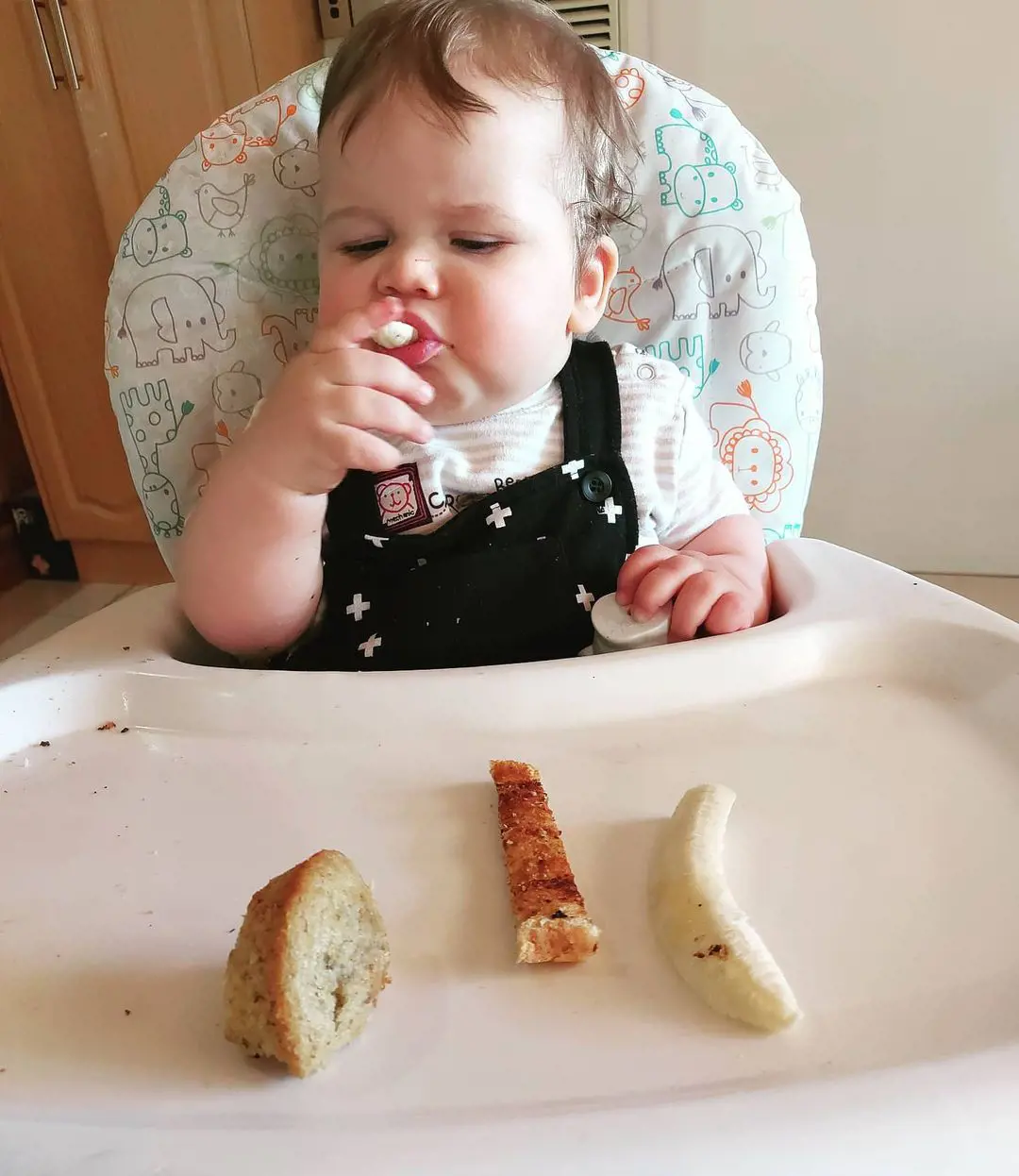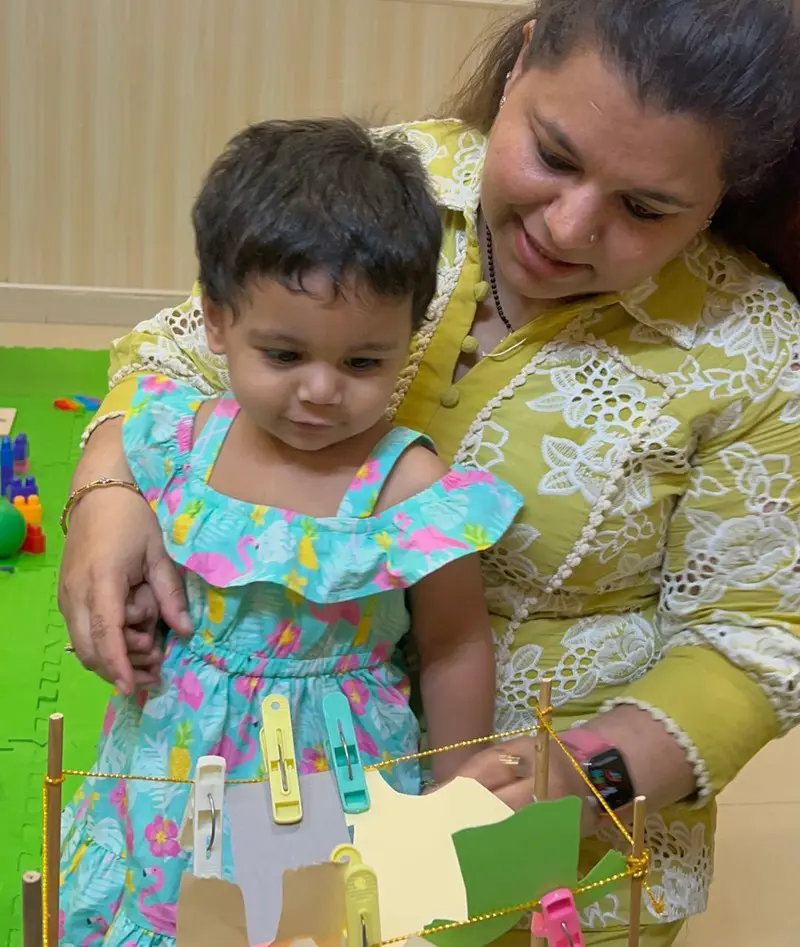If your're a new parent, changing diapers may seem daunting at first, but it's a skill you can master quickly with a little practice. This integral part of baby care keeps your little one clean and comfortable, while preventing diaper rash and irritation.
Let's explore the process of changing a diaper in 10 simple steps, so that you might confidently care for your baby's delicate skin. With the right supplies and a calm approach, this process becomes way easier and faster.
1. Wash Your Hands
Before you begin to change a diaper, it's crucial to wash your hands thoroughly with soap and water. This step can help remove germs and bacteria that could transfer to the baby, potentially causing infections or illnesses.
Proper hand hygiene can ensure a safe and healthy environment for the baby. This maintains overall cleanliness and prevents the spread of bacteria. This step is very essential for the well-being of both the parent and the kid.
2. Choose The Appropriate Cloth Diaper
Remember that there is no right or wrong time to start using cloth diapers. Some parents can begin at the hospital, while others prefer disposables for the first few weeks.
It is vital to figure out which type of cloth diapers suits your family best. Cloth diapers come in various styles, from flats, prefolds, contours, and all-in-ones. Flats and prefolds require folding, but practice will eventually make it easy. Experiment to find your ideal option.
3. Gather Your Supplies
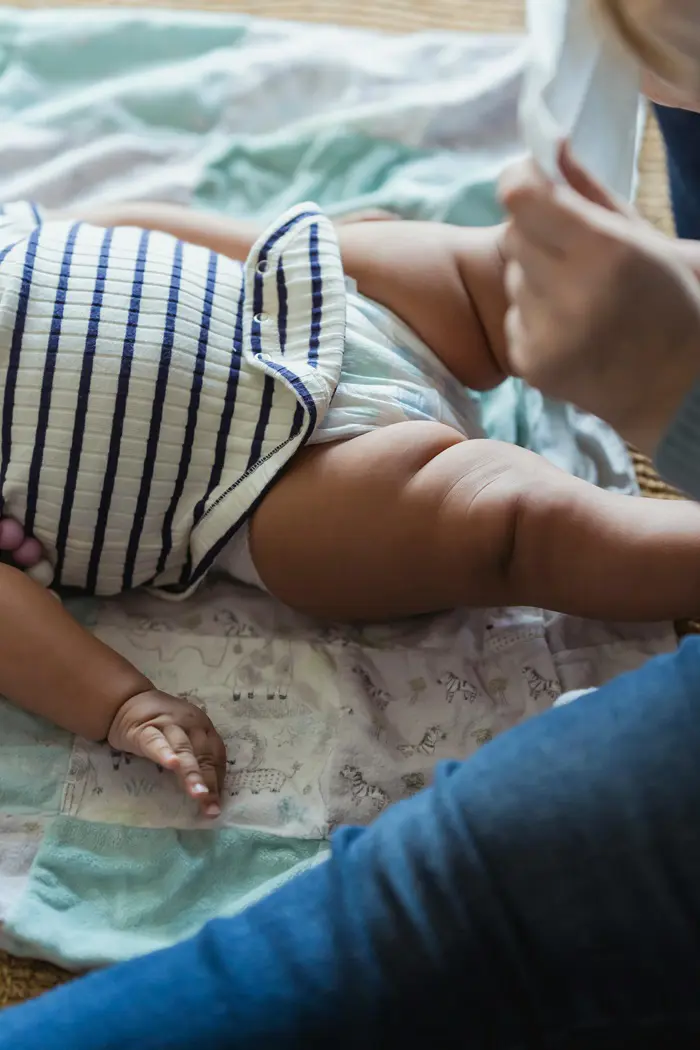
After washing your hands properly, you need to gather your supplies for the process. Remember to keep everything you require in your arm's length. However, it is vital to keep them away from your baby's reach for safety reasons.
You won't have to turn back every once in a while when you keep the supplies away from the bay's reach. Buy the needed supplies like a fresh diaper, wipes, diaper cover, and a gentle cream.
4. Put The Baby On A Flat Area
Putting your baby on a flat surface is an important step in changing their diaper. Make sure that the surface is clean, secure, and spacious enough for your baby to lie comfortably and safely.
Why is this step important? Placing your infant in a flat area will prevent falls and offer stability during the diaper change. Since a flat surface helps you maintain control, it will be easier to clean and properly fasten the new diaper.
5. Remove Clothes From Under The Baby
Removing clothes from under your baby is another step in changing a diaper. This step ensures easy access to the diaper area, making the process smoother and quicker. Start by placing your baby on a clean, flat surface.
You need to gently remove or unfasten any clothing from the waist down. This helps prevent the clothes from getting soiled. Removing the clothing properly also lets you keep one hand on your baby at all times.
6. Unfasten The Dirty Diaper
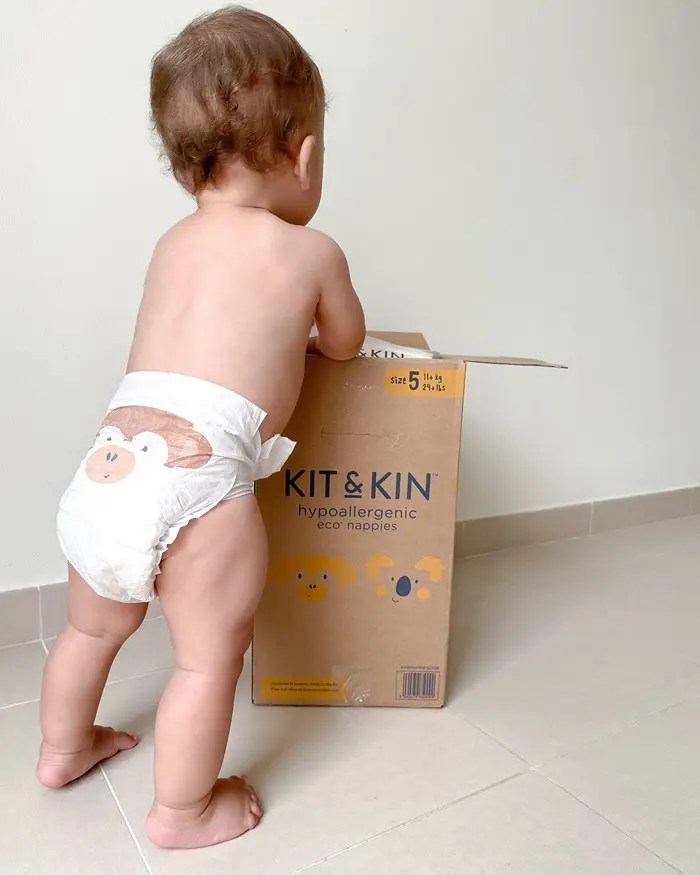
Unfastening the dirty diaper and grasping the situation is another crucial step in changing a diaper. Start by gently unfastening the diaper tabs, taking care not to spill its contents. Get some wipes ready since you may require lots of cleaning.
This process allows you to understand the level of cleanliness needed and ensures the baby's skin is thoroughly cleaned. It helps you identify any potential skin issues or unusual waste as well.
7. Remove The Dirty Diaper
Undo the diaper tabs and gently lift the baby's legs by holding the ankles. You need to fold the front of the diaper down and clean the baby's bottom using wipes, ensuring all waste is removed. Removing the dirty diaper after wiping is an important step.
Fold the dirty diaper underneath the baby and then lift it away, keeping it rolled to contain the mess. Proper removal helps the baby stay clean and reduces the risk of diaper rash and infections.
8. Apply Diaper Cream On The Baby
After removing the soiled diaper, you can apply a thin layer of diaper cream to the baby's clean, dry bottom. You should focus on areas prone to rashes like the buttocks and thigh creases.
Applying diaper cream is crucial because diaper cream acts as a barrier to protect the skin from moisture and irritation caused by urine and feces. It prevents diaper rash, keeping the baby's skin healthy and comfortable. Make sure that the cream is spread evenly.
9. Place A Clean Diaper And Fasten
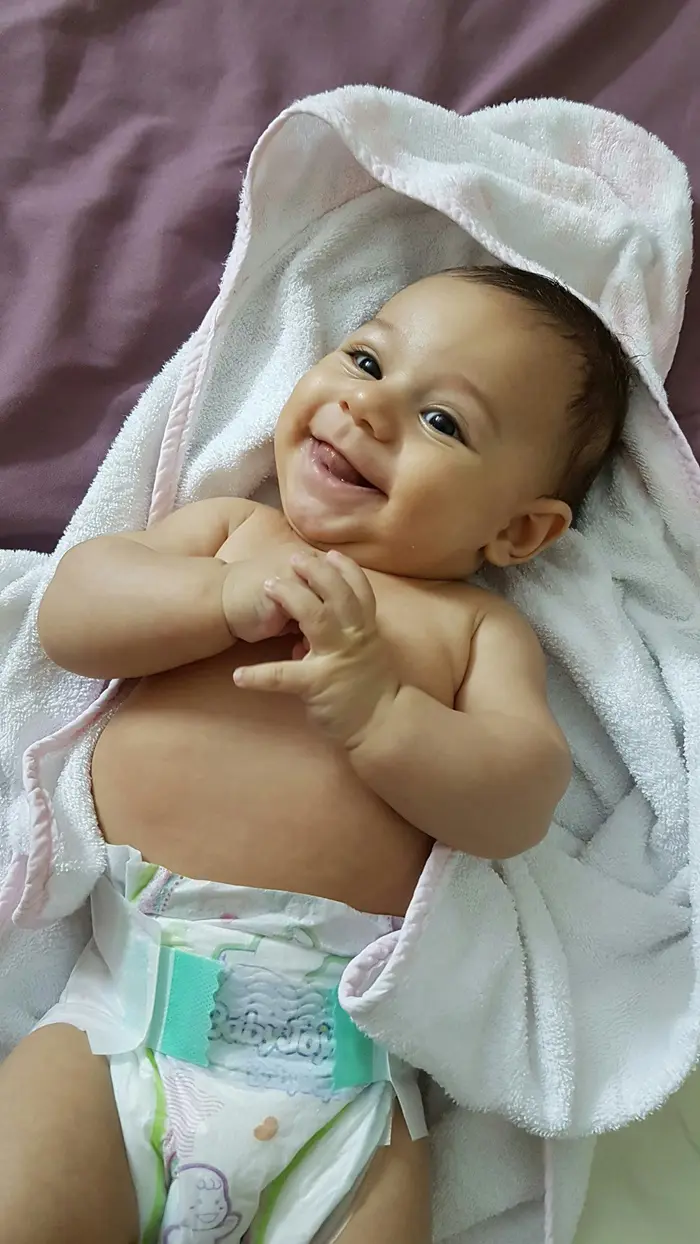
The next step is to place a clean diaper under the baby’s bottom with the back part aligned with the waist. Remember to fasten the sticky tabs on both sides to secure the diaper properly.
Fastening ensures the diaper stays in place, preventing leaks and keeping your baby comfortable and dry. A clean, fastened diaper aids to avoid irritation and rash by minimizing gaps where moisture can escape. Ensure the diaper is not too tight or too loose as well.
10. Redress The Baby
The final step is to redress your baby after changing their diaper. Once the new diaper is securely fastened and the baby is clean, gently lift the baby’s legs and place new clothes. The clothing should be smooth and not too twisted.
Proper redressing aids the baby be warm and comfortable while preventing any potential rashes or irritation from air exposure. It helps in maintaining the baby's cleanliness and ensures they are dressed properly for their next activities.
How Often Can I Change A Diaper?
Once you learn about how to change the diaper, it is also equally important to comprehend how often can you change the diaper. Your baby will need constant care in the diaper department, so basic knowledge will be quite useful.
You should change the baby's diaper every 2 to 3 hours (sooner if the diaper is soiled). Newborn babies often require more frequent changes due to their small bladders and frequent feedings. This leads to more frequent urination and bowel movements.
Monitoring Is Important
Monitoring for signs of a wet or dirty diaper is crucial in infants. You need to check diapers regularly, even if they don’t seem full, to prevent diaper rash and discomfort.
Nighttime changes can be less frequent, but if your baby wakes up crying or fussy, you need to check the diapers quickly. A change may be necessary to ensure a good night's sleep for your little one.
Moreover, you need to ensure that your baby's bottom is clean and dry before putting on a fresh diaper to promote healthy skin and prevent infections. Regular diaper changes contribute to overall comfort and hygiene.
When To Consult A Doctor?
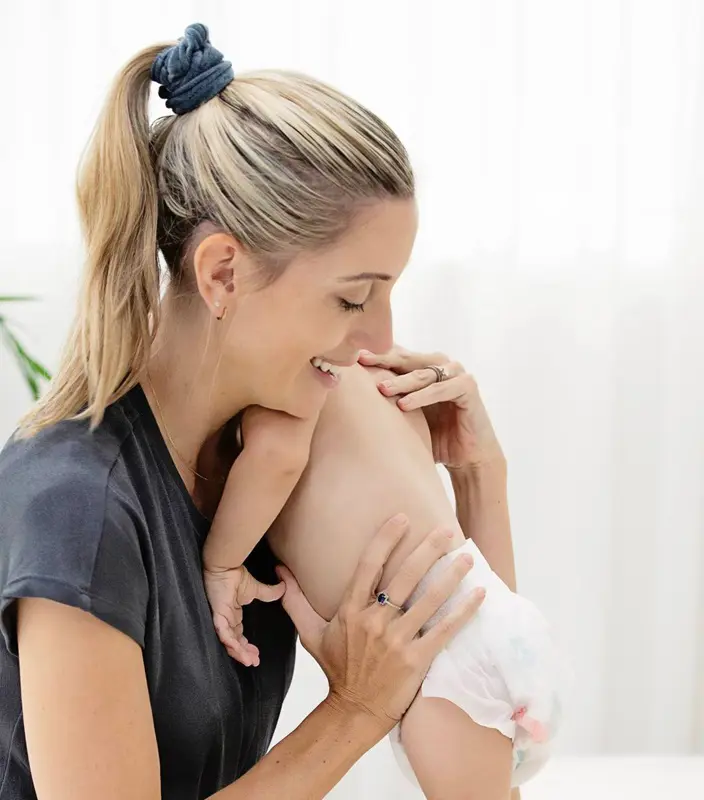
Changing diapers needs proper care, and you'll also need to be aware of any situations that can be problematic for your baby's health. If you witness some changes in your baby's diaper that may be an issue, it is vital to consult a doctor immediately.
Changes in their diaper could signal various health issues, from minor irritations to more serious conditions. Understanding when these changes are normal and when they need medical attention may aid you in keeping your baby healthy.
Here are some of the situations you need to watch out for:
- Blood in Stool - Blood or a red tinge in the diaper might indicate possible infections in the body like allergies or other serious conditions.
- Rash Not Improving - Diaper rash that doesn’t improve with over-the-counter treatments or spreads can showcase an infection or allergic reaction.
- Persistent Diarrhea - When your little one has diarrhea for more than 24 hours or if it is severe, this can be problematic. Moreover, this situation could lead to dehydration. You need to watch out for any diarrhea signs in your baby's diaper.
- Unusual Odor - A strong, foul smell may suggest an infection or digestive issue.
- Abnormal Color - Unusual colors or textures in the stool (for instance, black or white stool) can be a glimpse of digestive or liver problems.
- Abnormal Urination Frequency - If your baby has more frequent urination than usual, then this may be the time to consult a doctor. Moreover, if the urination is accompanied by discomfort or irritability, then the situation is more dire.
Tips For Changing A Diaper
Changing a diaper is a fundamental part of caring for a baby and covers more than just replacing a soiled diaper. Proper diaper-changing techniques ensure the baby's hygiene, prevent discomfort, and protect their delicate skin.
This task requires attention to detail, including wound care, safety measures, and ensuring the baby’s comfort. Understanding these aspects will aid your baby to be healthy. This task is routine and you need to have patience to complete them properly.
Safety
Safety is a paramount need while changing your precious baby's diaper. You need to always keep one hand on your baby or ensure they are secure in a safe location. Placing them on a safe changing table will prevent falls.
Moreover, you should ensure the changing table or surface is stable. Use safety straps if available to keep your baby secure during the changing process. All the supplies should also be prepared beforehand, to not waste precious time in removing the dirty diaper.
Comfort
Babies require comfort during the diaper-changing process so that they don't get fussy and move their bodies too much. If they feel discomfort, it could lead to crying, which will only delay your process.
Begin by using soft, hypoallergenic wipes and diapers to reduce irritation. Offer a gentle touch on your baby’s sensitive skin. Remember to put the baby in a warm changing area to keep your baby comfortable and prevent chills.
If you plan to take one step ahead, you can utilize toys to keep your baby distracted and calm during the diaper change. This will result in the process turning smoother for the parents.
Wound Care
Gentle wipes or a damp washcloth is required to clean the diaper area thoroughly. You need to ensure wiping from front to back to avoid spreading bacteria.
After cleaning the area, you must pat the area dry with a soft cloth. Alternatively, you can allow it to air dry before putting on a new diaper. This step aids in preventing skin irritation and rash.
Likewise, if the baby is circumcised or has umbilical stump, you need to follow a health instructor to clean your baby appropriately.
Things You Need To Change A Diaper
Knowing what items are important and how to use them effectively could help maintain hygiene and prevent diaper-related issues in your baby.
Here is a guide to the key items you need and their roles in making diaper changes easier and more effective:
Clean Diapers
A clean diaper is essential to put on your baby. They prevent skin irritation and infections by ensuring that your baby is always wearing a fresh, dry diaper. A clean diaper can efficiently absorb urine and feces, minimizing the risk of diaper rash.
Having an ample supply of clean diapers on hand is crucial for the management of your baby’s needs and ensuring their well-being throughout the day.
Wipes or Cleaning Cloth
Another item you require are the wipes or cleaning cloths. They are essential for changing diapers due to their convenience and effectiveness in maintaining hygiene.
They aid in quickly and efficiently cleaning your baby's delicate skin. These items will remove the baby's urine and stool to prevent irritation and infection.
Wipes are pre-moistened with gentle, often hypoallergenic solutions. Meanwhile, cleaning cloths are regarded as reusable, environmentally friendly, and might be sanitized for repeated use.
Diaper Cream
Diaper Cream is needed for preventing and treating diaper rash, a common issue caused by prolonged exposure to moisture, friction, or irritants.
This cream establishes a protective barrier on your baby's skin, shielding it from the dampness and chemicals found in urine and feces. Consistent application during diaper changes can also help prevent rashes from developing in the first place.
Changing Pad or Surface
A changing pad or surface is required for its convenience, cleanliness, and safety features. It offers a designated clean area to change your baby, aiding in preventing messes and protecting your furniture.
The pad typically has a waterproof layer to guard against spills and accidents, and its cushioned surface keeps your baby comfortable during changes. Many changing pads can come with built-in safety straps to secure your baby, reducing the risk of falls.
Disposable Bags
This item offers a convenient way to contain and dispose of soiled diapers. Using this item will prevent unpleasant odors and the spread of germs.
By sealing the used diaper in a disposable bag, you minimize the risk of contamination and maintain cleanliness in the changing area. These bags are typically designed to be leak-proof and easy to carry.
Moreover, they help in adhering to sanitation guidelines, especially in public places or shared facilities.



